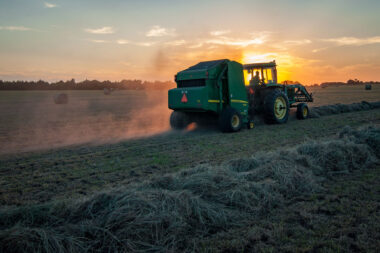Art and design have long been realms driven by human ingenuity and creativity. In recent years, a revolutionary force has emerged to challenge the traditional boundaries of artistic expression—Generative Adversarial Networks (GANs). These artificial intelligence systems are not mere tools; they are collaborators, pushing the envelope of what is possible in the creation of artworks, fashion designs, and multimedia content with an unprecedented blend of innovation and realism.
The Essence of GANs: Orchestrating Creative Alchemy
Generative Adversarial Networks (GANs) stand as technological alchemists, transforming the digital canvas into a realm where algorithms and creativity engage in a perpetual dance. This intricate interplay between the generator and discriminator, introduced by Ian Goodfellow and his collaborators in 2014, serves as the catalyst for a revolution in how we conceive and create art.
The Adversarial Symphony:
Generator Unleashed: The generator, the virtuoso of the GAN duet, conjures imagery from the depths of algorithms. It operates like an artist with a boundless imagination, crafting pixels and patterns that transcend the limits of traditional human inspiration.
Discriminator’s Discernment: Enter the discriminator, the discerning critic, evaluating each creation’s authenticity. Its role is not to stifle creativity but to push the generator to refine and elevate its craft continually. This adversarial relationship sparks an evolution of artistic expression.
The Evolution of GAN Art:
Artistic Inspiration, Not Duplication: GANs have matured beyond mimicking existing artworks. They now serve as wellsprings of inspiration, collaborating with human artists to produce pieces that embody both tradition and innovation. These creations challenge our perception of what constitutes originality and artistic authorship.
Dynamic Style Transfer: GANs have become adept at style transfer, seamlessly infusing artworks with the essence of various artists or art movements. This dynamic process breathes new life into classic styles, creating a visual tapestry that resonates with the echoes of art history.
AI-Generated Art
Unveiling the Unseen: GANs have the ability to unveil the unseen, presenting visualizations that were previously buried in the depths of algorithms. The digital canvas becomes a playground where AI and human creativity coalesce, uncovering novel perspectives and hidden artistic potentials.
Synthesis of Styles and Movements: The artistic experimentation facilitated by GANs extends to the synthesis of diverse artistic styles and movements. Imagine a fusion of Cubism with Abstract Expressionism or Impressionism with Surrealism, all encapsulated in a single AI-generated masterpiece.
Harmonizing Human and AI Creativity
Human-AI Symbiosis: GANs are not poised to replace human artists but rather to coalesce with them in a symbiotic relationship. The future promises an even deeper integration of human intuition and artistic insight with the computational prowess of GANs, opening new frontiers in creative exploration.
Interactive Artistic Expression: The evolving landscape suggests a future where AI becomes a collaborative tool, enabling artists to explore new realms of imagination. Interactive interfaces between humans and AI could redefine artistic expression, inviting individuals to actively participate in the creation process.
The Canvas Comes to Life
Advancing Beyond Imitation: GANs have evolved beyond mere replication to becoming engines of inspiration. Artists and AI collaborate to create artworks that blur the line between human and machine creativity. From paintings that evoke the essence of renowned artists to entirely novel visual spectacles, GANs have become a source of inspiration for the art world.
Unleashing Style Transfer: GANs excel at style transfer, seamlessly infusing artworks with the characteristics of various artists or art movements. Imagine Van Gogh’s Starry Night reinterpreted with elements of Salvador Dalí’s surrealism—a testament to the fusion of historical aesthetics with contemporary technology.
Fashion Design
AI as the Fashion Designer’s Muse: GANs have taken center stage in the fashion world, offering designers a novel muse. These networks can generate clothing designs, textures, and patterns that challenge conventional fashion norms. From haute couture to streetwear, GANs are influencing the very fabric of what we wear.
Virtual Try-Ons and Personalization: GANs enable virtual try-ons, allowing users to visualize garments on themselves before making a purchase. Personalization takes a leap forward as GANs generate unique clothing designs tailored to individual preferences, ushering in a new era of bespoke fashion.
Multimedia Marvels
AI-Enhanced Visuals in Media: GANs are amplifying the visual appeal of multimedia content. From enhancing video quality to generating lifelike animations, these networks are becoming indispensable tools for content creators in film, gaming, and virtual reality.
AI-Generated Music and Soundscape: GANs are not confined to the visual realm; they are composing music and crafting soundscapes. These AI-generated melodies explore uncharted territories, challenging preconceived notions of what music is and where creativity can spring from.
Hardware and Software Requirements for Generative Adversarial Networks (GANs):
Generative Adversarial Networks (GANs) involve a combination of specialized hardware and software to unleash their creative potential. Here’s an overview of the key components required for implementing GANs effectively:
Hardware Components:
Graphics Processing Units (GPUs):
Description: High-performance GPUs are fundamental for training GANs efficiently. Their parallel processing capabilities accelerate the complex computations involved in the neural network training process.
Recommended GPUs: NVIDIA GeForce RTX series, NVIDIA A100 Tensor Core GPUs.
Central Processing Units (CPUs):
Description: CPUs play a role in preprocessing and handling certain tasks during GAN training. While not as crucial as GPUs, a powerful CPU can contribute to overall system performance.
Recommended CPUs: High-core count processors like Intel Core i9, AMD Ryzen 9.
Memory (RAM):
Description: Ample RAM is essential for handling large datasets and ensuring smooth operations during GAN training.
Recommended RAM: Minimum 16GB, ideally 32GB or higher for larger models and datasets.
Storage:
Description: Fast and high-capacity storage is necessary for storing datasets, model checkpoints, and other training-related data.
Recommended Storage: SSDs for faster data access and storage capacities based on dataset size.
High-Resolution Monitors:
Description: High-resolution monitors are beneficial for visually assessing generated outputs and monitoring the training process effectively.
Recommended Monitors: 4K monitors for detailed visualizations.
Software Components
Deep Learning Frameworks:
Description: Frameworks provide essential tools for implementing and training GANs. They come equipped with pre-built functions for neural network operations.
Popular Frameworks: TensorFlow, PyTorch, Keras.
Python:
Description: Python serves as the primary programming language for GAN implementations and interactions with deep learning frameworks.
Recommended Versions: Python 3.x.
CUDA and cuDNN:
Description: CUDA (Compute Unified Device Architecture) and cuDNN (CUDA Deep Neural Network library) are GPU-accelerated computing frameworks that optimize neural network computations on compatible GPUs.
Jupyter Notebooks:
Description: Jupyter notebooks facilitate an interactive and visual coding environment, making it easier to experiment with GAN architectures and visualize results.
Installation: Jupyter can be installed using Python package managers (pip or conda).
GAN Libraries:
Description: Specialized GAN libraries offer pre-built models, training procedures, and utilities tailored for GAN development.
Examples: Libraries specifically designed for GANs, offering implementations and tools for various applications.
Image Processing Libraries:
Description: Image processing libraries are crucial for handling and manipulating datasets, especially in computer vision-based GAN applications.
Examples: Libraries with functions for image loading, preprocessing, and augmentation.
Version Control:
Description: Version control systems help manage code changes and collaborate on GAN projects effectively.
Examples: Systems that allow tracking code changes, facilitating collaboration among developers.
Data Visualization Tools:
Description: Visualization tools aid in inspecting and understanding GAN-generated outputs and training progress.
Examples: Libraries or tools for creating charts, graphs, and visual representations of data.
Containerization (Optional):
Description: Containerization tools enable the encapsulation of GAN applications and dependencies for consistent deployment across different environments.
Examples: Tools that create lightweight, portable environments for reproducible GAN implementations.
Text Editors or IDEs:
Description: Text editors or Integrated Development Environments (IDEs) provide a comfortable coding environment for GAN development.
Examples: Text editors like VSCode, Sublime Text, or IDEs like Spyder, Atom.
Challenges and Ethical Considerations:
While the creative prowess of GANs is awe-inspiring, it is not without its challenges. Issues of copyright, intellectual property, and ethical considerations in AI-generated art are on the rise. The interplay between AI and human creativity also raises questions about authorship and the evolving role of the artist in a digitally augmented landscape.
As GANs continue to evolve, the future holds a promise of even greater harmony between human and machine creativity. AI-generated masterpieces will be more seamlessly integrated into our cultural tapestry, challenging our perceptions of art, design, and the very essence of creativity.
In this symbiotic dance between human ingenuity and artificial intelligence, GANs are not replacing artists; they are becoming collaborative partners, expanding the horizons of artistic expression and inviting us to reimagine what is possible when pixels, algorithms, and human imagination converge on the canvas of the future.



